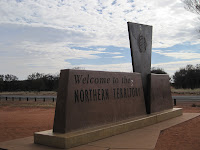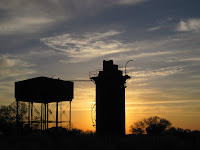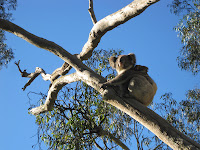 |
| The desert Rose |
 |
| Some bushtucker |
 Next day a trip to the slightly out of town Desert Park with walking trails, avaries and lots of information about the different kinds of desert habitats- river, sand and woodland- set amongst the beautiful backdrop of the MacDonnell ranges. In the nocturnal habitats were some of the small marsupials, many endangered now due to feral cats (which having evolved in the desert of Africa originally have been reverting back towards wild cats for many decades now) including spiniflex mice who seem to exist on nothing!
Next day a trip to the slightly out of town Desert Park with walking trails, avaries and lots of information about the different kinds of desert habitats- river, sand and woodland- set amongst the beautiful backdrop of the MacDonnell ranges. In the nocturnal habitats were some of the small marsupials, many endangered now due to feral cats (which having evolved in the desert of Africa originally have been reverting back towards wild cats for many decades now) including spiniflex mice who seem to exist on nothing!  On saturday, after a short walk up Anzac hill for the view and then recovering from the heat it was time to fly North to Darwin. (from the dry interior sauna to the tropical North steam-room!)
On saturday, after a short walk up Anzac hill for the view and then recovering from the heat it was time to fly North to Darwin. (from the dry interior sauna to the tropical North steam-room!)














































